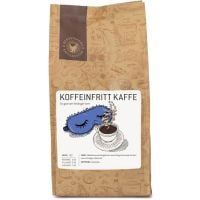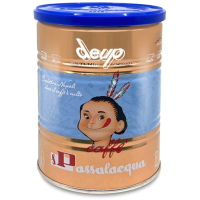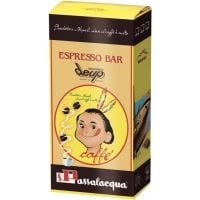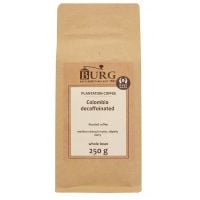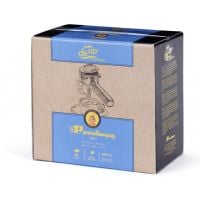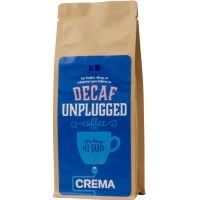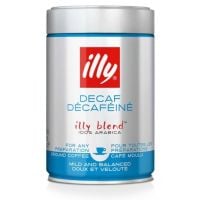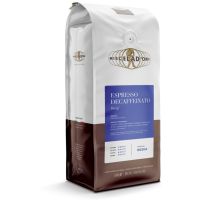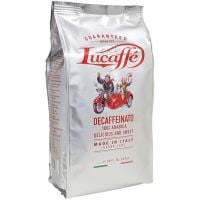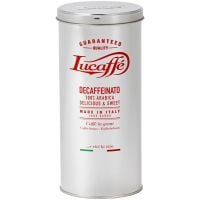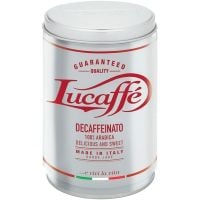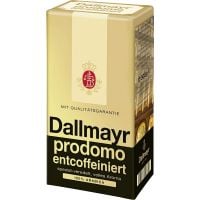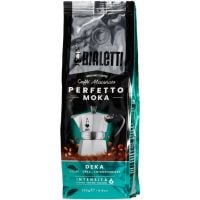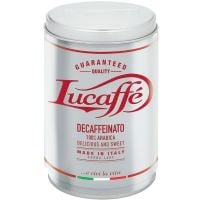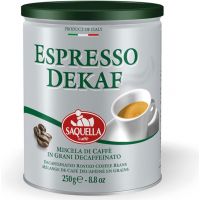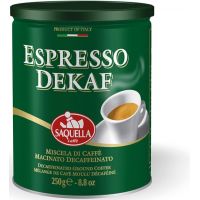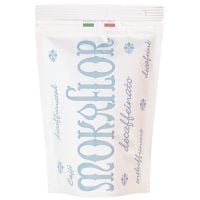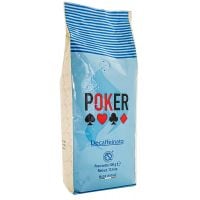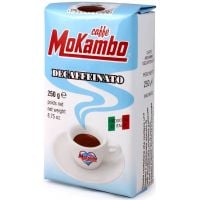Caffeine free coffee a.k.a Decaf
Caffeine
When we think about caffeine we tend to think about coffee and all delicious coffee drinks available and also the energizing effect that caffeine has on us. This is all correct and true, but did you know that caffeine actually is the coffee plant's natural pesticide with the purpose to repel harmful insects and lure harmless pollinators such as honeybees.
Caffeine occurs in several plant species i.e. coffee beans, tea leaves, cocoa, yerba mate and guarana. As such pure caffeine is a white, bitter and odourless powder; an organic chemical belonging to the group purine alkaloids.
Caffeine is water-soluble meaning that it extracts when in contact with water, hence giving the liquid, coffee or tea a caffeine content.
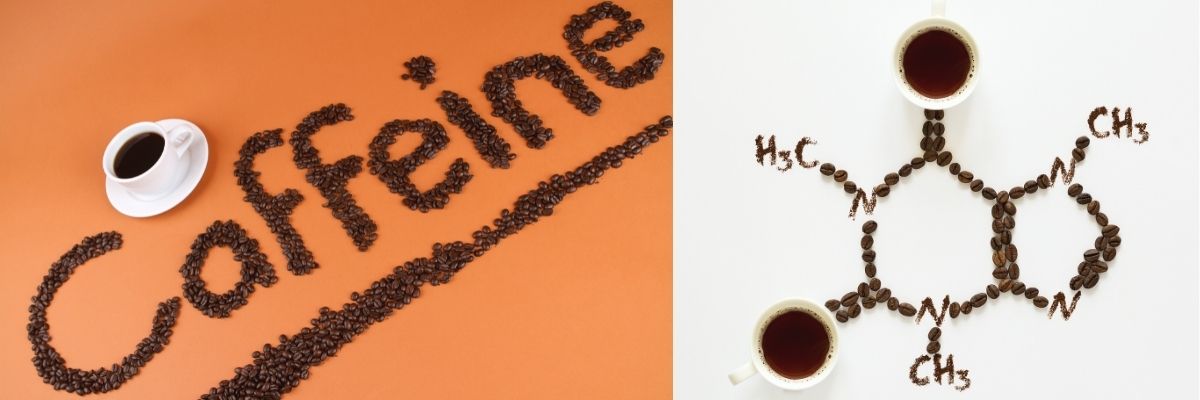
How does caffeine affect the body?
Caffeine is a stimulant and has an energizing and activating effect on the human body. Caffeine raises the pulse, makes breathing quicker, activates muscles and increases metabolism and blood flow. Caffeine has also an effect on the reward hormone producing areas in the brain causing a feeling of activity and energy.
For caffeine sensitive persons even a small dose of caffeine can cause some unpleasant physical symptoms that are experienced also during a so called caffeine over dose. Too much caffeine can cause restlessness in the body, insomnia, nausea, stomach problems, trembling, palpitation, nervousness and anxiety. In case of these reactions to caffeine it is recommended to avoid over consumption and chose Decaf Coffee and caffeine free options.
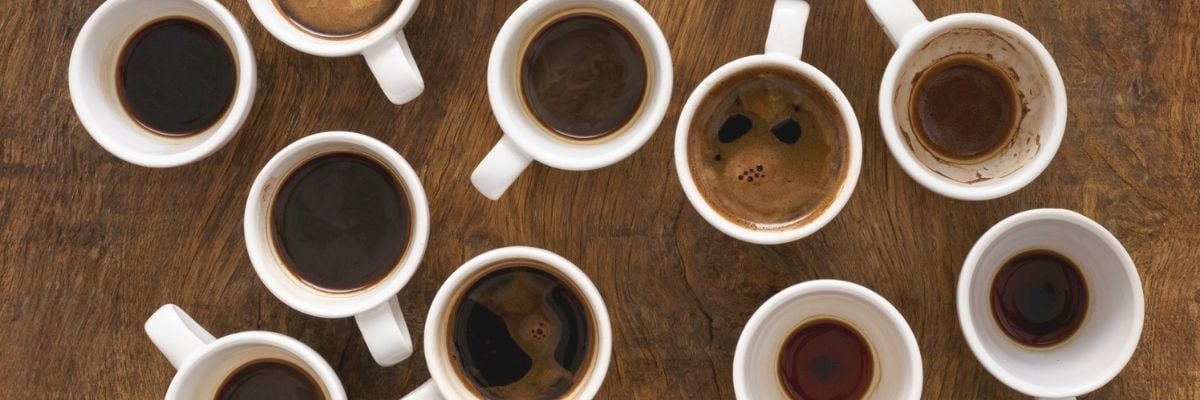
How is caffeine removed from coffee?
The amount of caffeine in a regular cup of coffee depends on a few variables such as what type of coffee beans are used, degree of roasting and how the coffee is brewed. Arabica coffee beans grown in higher altitudes often contain less caffeine than the Robusta bean grown on lower levels, because there are not as many harmful insects higher above sea level.
The removal of caffeine from coffee beans was invented in the early 1900’s but these initial caffeine extraction methods were neither especially safe nor “non-toxic”. Nowadays the methods for caffeine extraction and removal are luckily harmless but they are not cheap. There are methods where fairly harmless chemicals are used that dissolve and evaporate at the latest when the coffee beans are roasted. And there are organic methods that might require a double amount of raw material or high investments. The caffeine extraction methods of today are patented and manage to remove at least 97 % of the caffeine.
All caffeine extraction takes place while the coffee beans are raw, green and unroasted. The processes are designed to interfere as little as possible with the flavours and features of the coffee beans.
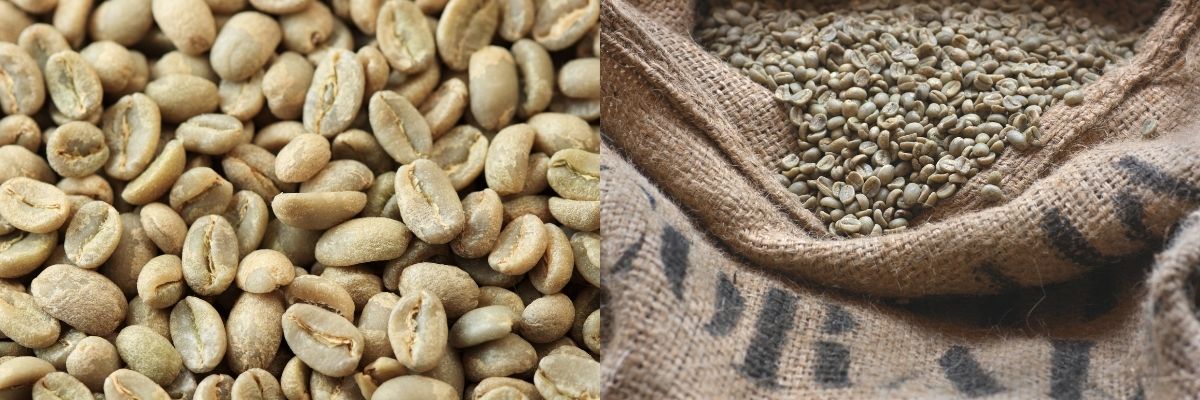
Caffeine extraction with solvents
The most common chemical solvents used to extract and remove caffeine from the coffee beans are methylene chloride and ethyl acetate. These chemicals are not directly harmful but can cause irritation if inhaled. There are two ways of using the solvent extraction method.
Green beans are steamed so that their surface and pores open up and are ready to release caffeine molecules. The beans are then treated with the solvent that extracts and binds the caffeine molecules. Thereafter the beans are steamed again to get rid of the solvent and caffeine from the surface of the beans.
Alternatively green beans are soaked in water long enough for the water-soluble caffeine and all other aromatic compounds, oils and sugars have dissolved into the water. The beans are then removed from the water and the solvent is added to the water where it binds to the caffeine. The caffeine is now removable either by boiling or filtering, leaving only the flavour aromas to the saturated water. The beans are returned to the water and left to soak back up the flavours without the caffeine. It’s also possible to add a fresh batch of green beans to soak in the flavour saturated water.This time only the caffeine dissolves into the water leaving the flavours and other components in the beans because the water and the beans now have the same flavour and oil balance.
This second method of using solvents is more popular as the solvent never is in direct contact with the coffee beans.
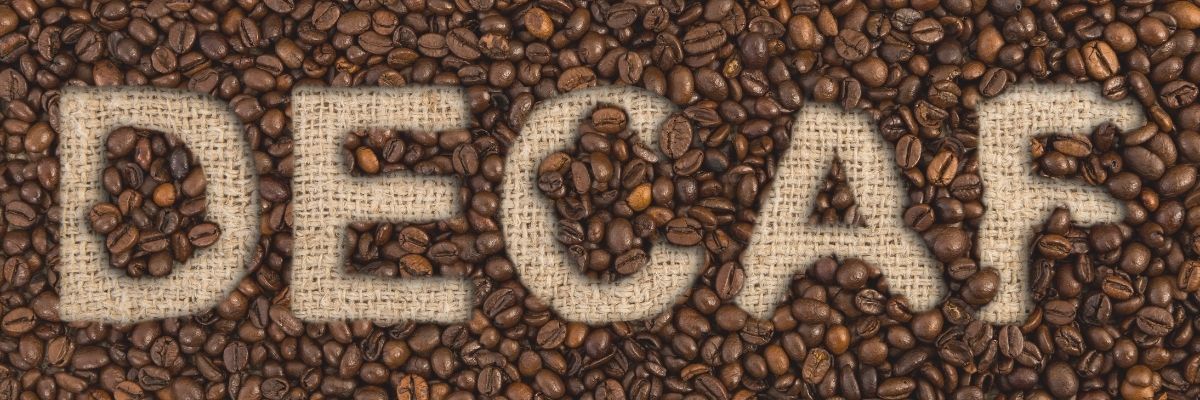
Organic decaffeination methods
Swiss Water Process
The patented Swiss Water Process is today the most popular form of decaffeination. The method was invented by Swiss scientists in the 1980’s who wanted to remove the caffeine from coffee without using chemicals. The method turned out to be commercially implementable and is now used in bigger coffee production plants.
The process starts again with soaking the beans in hot water for many hours so that the caffeine and other coffee bean components leach out into the water. The water is then passed through an activated charcoal filter that captures the caffeine molecules, while allowing the other flavour molecules to pass through and remain in the water. The water without caffeine is then reabsorbed back into the coffee beans. The whole process takes up to ten hours.
A down side of the Swiss Water process is that the extracted caffeine is not reusable after being captured by the activated charcoal. In other decaffeination processes the extracted caffeine can be refined and used for other purposes such as energy drinks, soft drinks and dietary supplements.
CO2 Method
In large scale coffee production the patented carbon dioxide method, CO2 Method, is widely used for decaffeination. The procedure is expensive, requiring investments in large scale equipment, but effective and popular among big coffee corporations. The method begins again with soaking beans in water to open up the surface and pores of the coffee beans. Carbon dioxide, that attracts and binds caffeine, is then added to the water creating a sparkling water solution. The caffeine saturated carbon dioxide is then removed from the water leaving behind only the flavour components that are finally reabsorbed to the coffee beans.
A regular cup of coffee (2-2,5 dl) contains approximately 80-100 mg of caffeine or even more depending on the type of coffee bean. In an espresso you have 60-100 mg caffeine depending on whether it is a single or double shot. According to recommendations, a person should not consume more than 400 mg of caffeine per day. If you are a true coffee enthusiast and big daily consumer of coffee and start experiencing symptoms of caffeine sensitivity, decaf coffee might be a great solution and aid to reduce your daily caffeine intake.
Thankfully there are a lot of great decaf options available today suitable for any coffee brewing method and coffee beverage.
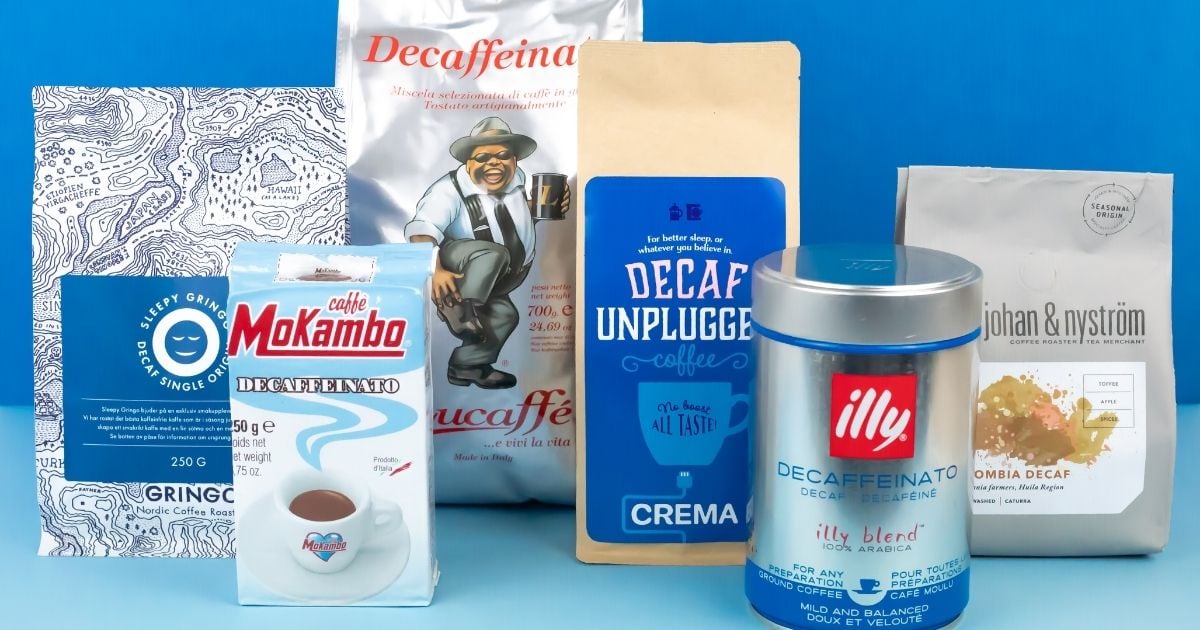
Decaf coffee made with the CO2 method
Decaf coffee made with the Swiss Water and similar methods
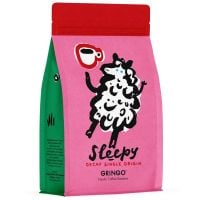
Gringo Nordic The Sleepy Gringo Decaf 250 g Coffee Beans
More caffeine free coffee
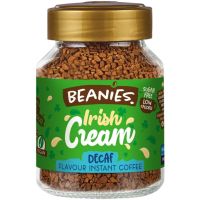
Beanies Decaf Irish Cream Flavoured Instant Coffee 50 g
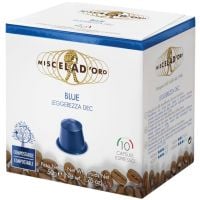
Miscela d'Oro Blue Decaf Nespresso Compatible Coffee Capsules 10 pcs

Mokambo Decaffeinato Decaf Coffee 500 g Coffee Beans
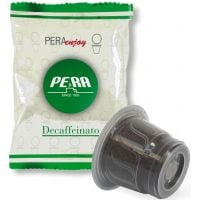
Pera Decaffeinato Nespresso Compatible Coffee Capsule 50 pcs
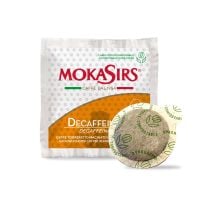
MokaSirs Decaffeinato decaffeinated ese espresso pods 100 pcs
Brew Guides
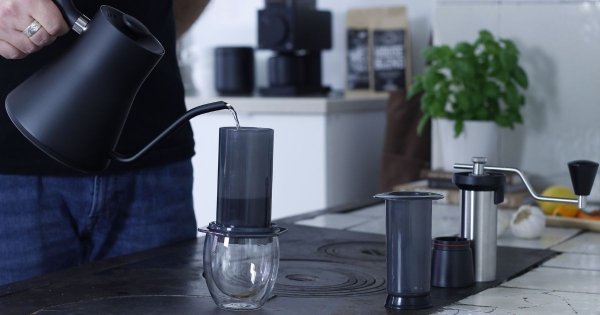
How to prepare AeroPress coffee
Do you already know how to use your AeroPress? Check out our short guide and learn how to brew coffee with an AeroPress coffee maker.
Read more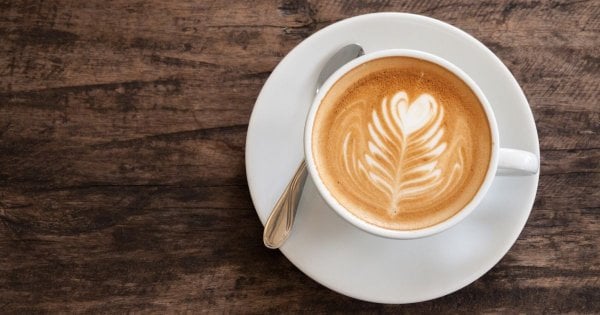
How to make cappuccino at home
You can make a delicious cappuccino at home even if you don’t have an espresso machine.
Read more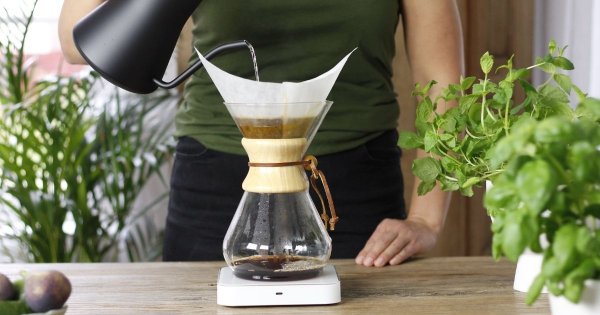
Chemex brewing guide
What a sophisticated and charming way to brew and serve coffee. The Chemex coffee maker is unique and makes perfect coffee.
Read more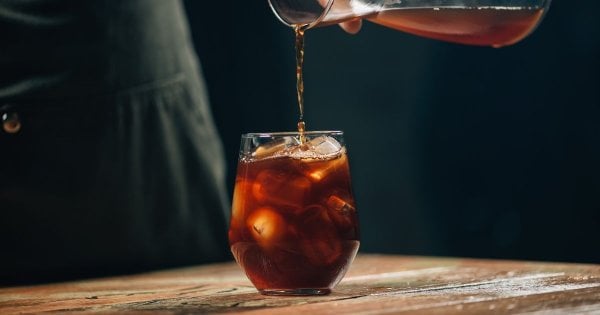
How to make cold brew coffee
Learn how to use your cold brew coffee maker for smooth coffee that is perfect for hot summer days. Check out our recipe for preparing cold brew coffee.
Read more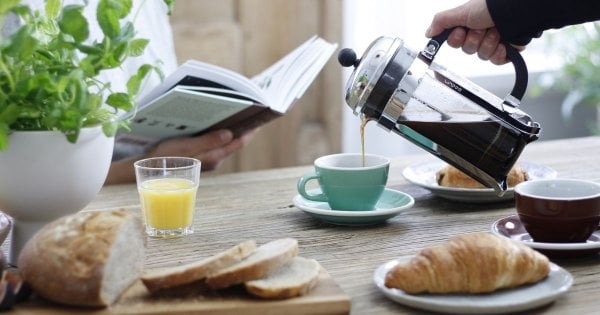
How to use a french press
Make rich and classic coffee with a convenient french press coffee maker; also known as a coffee plunger, press pot and cafetière. See our instructions for preparing elegant and delicious coffee with a french press.
Read more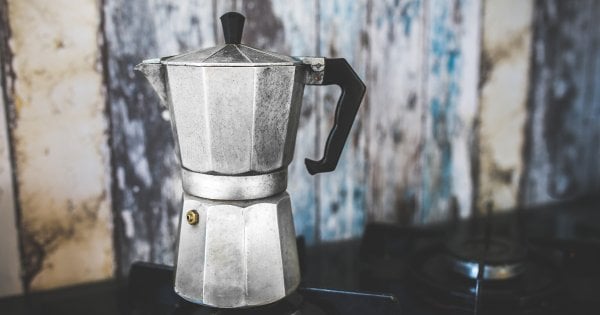
Moka pot brewing guide
Do you already know how to make moka pot coffee? Learn how to use a moka pot with our guide.
Read more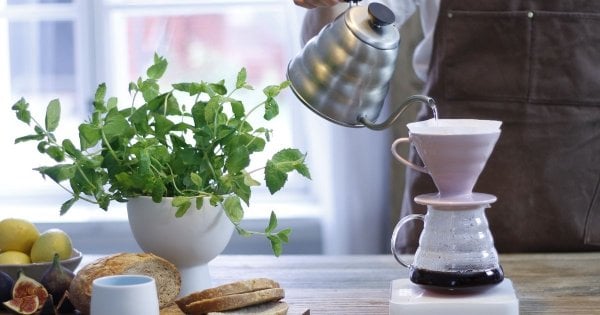
Pour Over coffee with Hario V60 dripper
Follow Crema’s guide and brew pour over coffee with Hario V60 dripper like a pro! It is a simple and affordable way to make delicious coffee.
Read more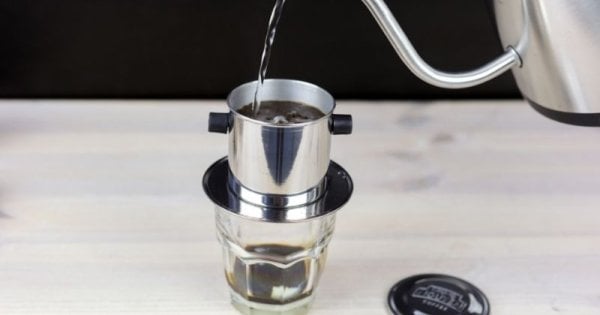
How to make Vietnamese Coffee with a Phin filter
A brew guide on how to brew Vietnamese coffee using a phin filter, and ideas for iced coffees.
Read more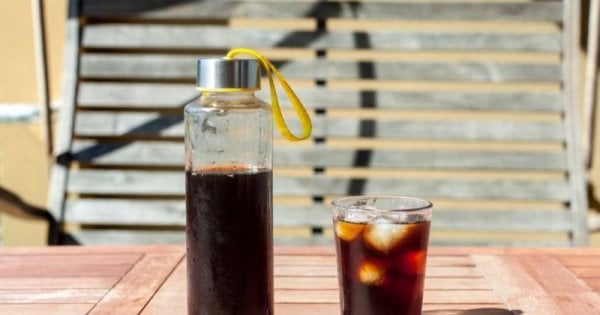
Making Cold Brew coffee with various equipment
You can make Cold Brew coffee using varying brewing equipment. Here we list a few easy ways to cold brew coffee.
Read more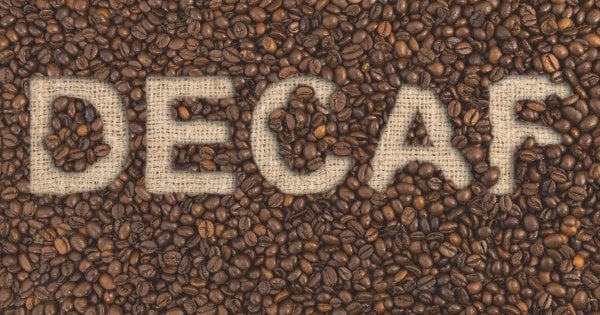
Caffeine free coffee - Decaf
Caffeine free coffee is a good alternative for the caffeine sensitive. This is how caffeine is removed from the coffee bean. Wide selection of decaf coffee at Crema.
Read more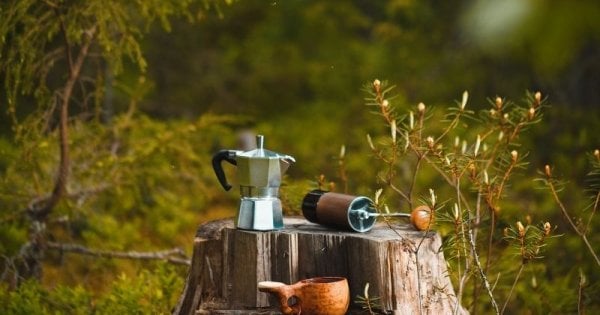
Outdoor coffee - a coffee break in nature
Outdoor coffee. With the right coffee makers and equipment you'll have a wonderful coffee break out in the wild!
Read more